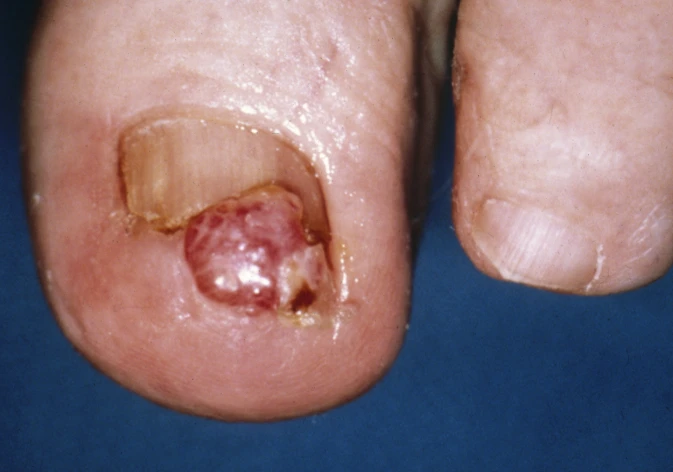Published on
Differential Diagnosis
- Amelanotic melanoma
- Cutaneous squamous cell carcinoma
- Nodular basal cell carcinoma
- Subungual fibroma

Diagnosis
The correct diagnosis is amelanotic melanoma, a clinical subtype of cutaneous melanoma with little to no pigment on visual inspection. Amelanotic melanomas account for 2% to 10% of all melanoma cases. Any subtype of melanoma can present as amelanotic; however, nodular melanomas and unclassified melanomas (including desmoplastic and subungual melanomas) are most commonly reported.
Learnings/What to Look for
- Diagnosis is difficult as the appearance is more consistent with a mole, fibroma, hypertrophic scar, basal cell carcinoma, or squamous cell carcinoma
- Risk factors for amelanotic melanoma include exposure to UV rays, moles, fair skin, blond or red hair, older age, family or personal history of melanoma, and high amount of moles
- While no survival difference between pigmented and amelanotic melanomas exists, amelanotic melanomas tend to be associated with a worse overall survival rate than the pigmented counterpart, likely due to delay in diagnosis
Pearls for Urgent Care Management
- Referral to dermatology is warranted for further treatment considerations, including surgical excision
Acknowledgement: Image and case presented by VisualDx (www.VisualDx.com/jucm).
Click Here to download the article PDF
A 49-Year-Old with a 4-Week-Old Lesion on Her Toe
1 2
